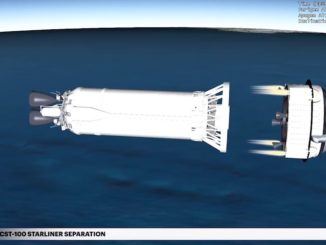EDITOR’S NOTE: Updated at 12 p.m. EST (1700 GMT) after confirmation of a successful test flight.
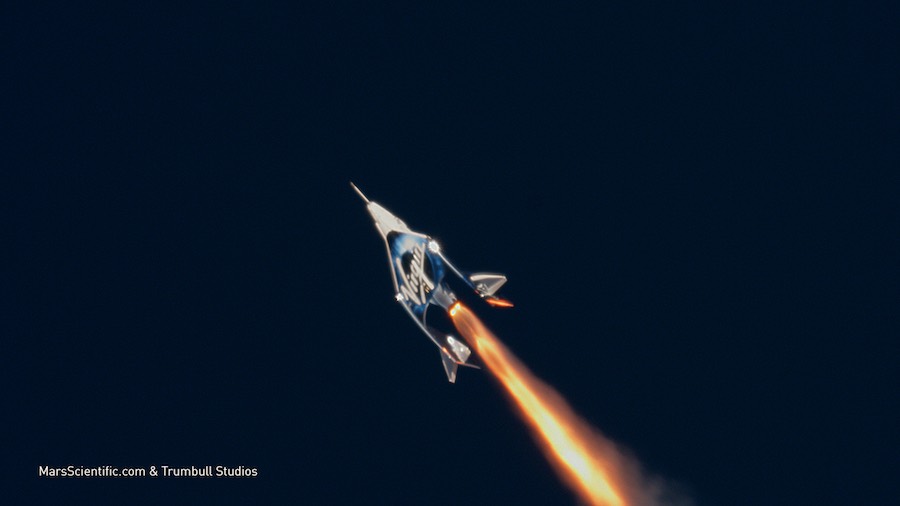
With two veteran test pilots at the controls, Virgin Galactic’s SpaceShipTwo rocket plane climbed to the edge of space for the first time Thursday in a major achievement for Richard Branson’s long-sought ambition to begin regular commercial hops with space tourists, and the first piloted flight by a U.S. vehicle above an altitude of 50 miles (80 kilometers) since the last space shuttle mission in 2011.
The successful test flight Thursday propelled Virgin Galactic — founded by Branson in 2004 — closer to commercial service after a 14-year effort slowed by development problems, and a fatal crash in 2014 that set the program back more than three years.
“Today, for the first time in history, a crewed spaceship, built to carry private passengers, reached space,” Branson said. “Today we completed our first revenue-generating flight and our pilots earned their commercial astronaut wings. Today, we have shown that Virgin Galactic really can open space to change the world for good.
“We will now push on with the remaining portion of our flight test program, which will see the rocket motor burn for longer and VSS Unity fly still faster and higher towards giving thousands of private astronauts an experience which provides a new, planetary perspective to our relationship with the Earth and the cosmos,” Branson continued. “This is a momentous day, and I could not be more proud of our teams who together have opened a new chapter of space exploration.”
The SpaceShipTwo vehicle, helmed by Virgin Galactic test pilots Mark “Forger” Stucky and Rick “C.J.” Sturckow, took off from the Mojave Air and Space Port around 10:10 a.m. EST (7:10 a.m. PST; 1510 GMT) Thursday under a specially-designed four-engine carrier jet.
The jet-powered mothership, named VMS Eve, took nearly an hour to climb to an altitude of 43,000 feet (about 13,100 meters) over the Mojave Desert, where it dropped the SpaceShipTwo vehicle, christened VSS Unity, at around 10:59 a.m. EST (7:59 a.m. PST; 1559 GMT). The rocket plane fell for a few seconds, then ignited its rear-mounted hybrid rocket motor for 60 seconds, propelling Stucky and Sturckow to a target altitude of more than 50 miles (80 kilometers).
Virgin Galactic live-tweeted Thursday’s flight, providing play-by-play updates as the suborbital spaceship rocketed through the rarefied upper atmosphere, then soared into the nearly airless environment of space. The company did not provide a live webcast of Thursday’s test flight.
VSS Unity reached a maximum altitude of 271,268 feet, or 82.7 kilometers, and a top speed of Mach 2.9 — nearly three times the speed of sound, according to Virgin Galactic.
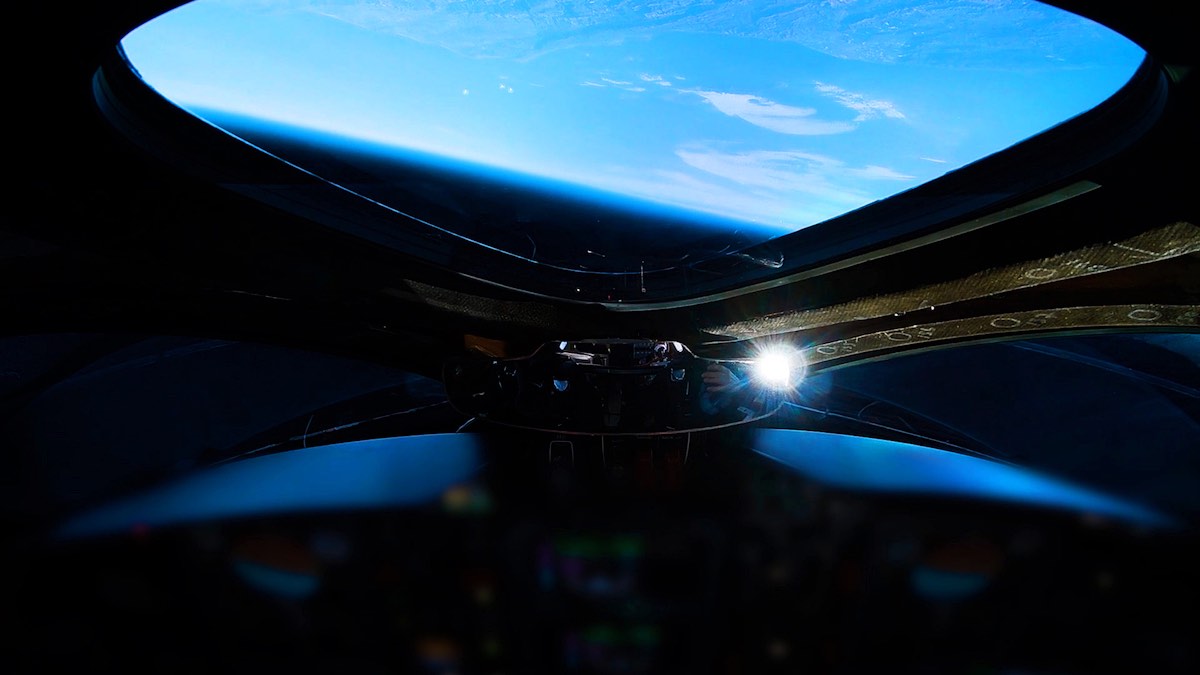
In a press release Tuesday, Virgin Galactic — founded by billionaire entrepreneur Richard Branson — said the company was entering a new phase of testing on SpaceShipTwo, an upsized commercial version of the SpaceShipOne rocket plane that won the Ansari X Prize in 2004, becoming the first privately-funded spacecraft to carry a human to space.
SpaceShipOne flew to an altitude of more than 62 miles (100 kilometers) on three occasions, first in June 2004, then on back-to-back quick-turnaround flights on Sept. 29 and Oct. 4, 2004.
“During this phase of the flight program we will be expanding the envelope for altitude, air speed, loads, and thermal heating,” Virgin Galactic said in a statement announcing plans for Thursday’s SpaceShipTwo test flight. “We also plan to burn the rocket motor for durations which will see our pilots and spaceship reach a space altitude for the first time.”
The reusable SpaceShipTwo rocket plane has a length of around 60 feet (18 meters), and a wingspan of 27 feet (8 meters). Once the rocket-powered portion of the flight was completed, and after a few minutes of weightlessness, Stucky and Sturckow steered the craft for a glide back to a runway landing at Mojave Air and Space Port, where VSS Unity touched down around 11:14 a.m. EST (8:14 a.m. PST; 1614 GMT).
“Many of you will know how important the dream of space travel is to me personally,” Branson said in remarks on the flight line at Mojave. “Ever since I watched the moon landings as a child, I have looked up to the skies with wonder. We started Virgin nearly 50 years ago dreaming big and loving a challenge. Today, as I stood among a truly remarkable group of people with our eyes on the stars, we saw our biggest dream and our toughest challenge to date fulfilled. It was an indescribable feeling: joy, relief, exhilaration and anticipation for what is yet to come.”
Stucky is a former U.S. Marine Corps and NASA test pilot, with more than 9,000 hours of flying time on a variety of aircraft, including the F-4, F-16 and F/A-18 fighter planes, along with a variant of the U-2 spy plane. Sturckow is a former NASA astronaut and a retired Marine Corps test pilot who flew on four space shuttle missions, and commanded two shuttle flights to assemble the International Space Station.
VSS Unity is the second SpaceShipTwo vehicle to be built, following the loss of the VSS Enterprise rocket plane in a fatal crash in 2014 that killed Michael Alsbury, the craft’s co-pilot. Lead pilot Peter Siebold parachuted back to the ground after a harrowing fall from the stratosphere when VSS Enterprise lost control and broke apart moments after igniting its rocket motor on an atmospheric test flight.
Engineers blamed pilot error for the accident, which occurred after Alsbury prematurely unlocked SpaceShipTwo’s feathering system, twin tail booms that are used to re-orient the rocket plane and slow it down for descent back into the dense, lower layers of the atmosphere. While the pilots did not command the feathering system to engage, the air flow at the ship’s altitude forced the booms to rotate toward their re-entry positions, leading to the craft’s disintegration at an altitude of more than 50,000 feet.
The new SpaceShipTwo models, beginning with VSS Unity, have an added safety feature to prevent pilots from unlocking the tail fins too early.
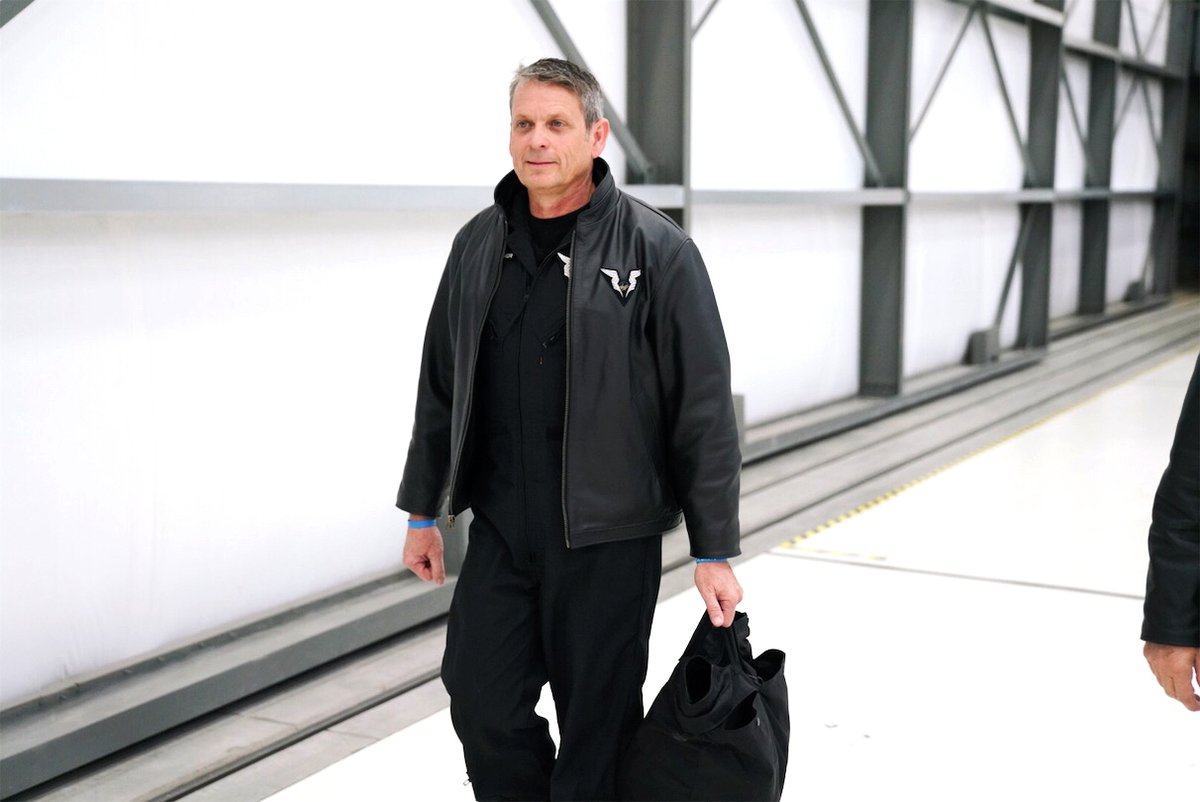
Virgin Galactic, through it subsidiary The Spaceship Company, took over development and construction of subsequent SpaceShipTwo vehicles from Scaled Composites after the crash. VSS Unity made its first captive carry test flight underneath the VMS Eve mothership in 2016, followed by a series of unpowered glide flights and three rocket-powered tests beginning in April, ahead of Thursday’s trip to the edge of space.
Once the test flight program is completed, Virgin Galactic plans to relocate operational SpaceShipTwo flights to Spaceport America facility in New Mexico. The SpaceShip company is building additional SpaceShipTwo vehicles to allow for a higher flight rate after commercial service begins. Virgin Galactic has not announced a timetable for the first flight with paying passengers, or when Branson himself plans to climb aboard VSS Unity for a spaceflight.
Here is a list of the VSS Unity’s powered test flights to date:
- April 5: Apogee of 84,271 feet (25.7 kilometers); Top speed of Mach 1.87
- May 29: Apogee of 114,500 feet (34.3 kilometers); Top speed of Mach 1.9
- July 26: Apogee of 170,800 feet (52 kilometers); Top speed of Mach 2.47
- Dec. 13: Apogee of 271,268 feet (82.7 kilometers); Top speed of Mach 2.9
SpaceShipTwo is designed to carry six passengers, along with two pilots, close to the boundary of space. Commercial flights of the vehicle are expected to fly to an altitude of at least 50 miles (80 kilometers). The U.S. Air Force and NASA awarded astronaut wings to pilots of the X-15 rocket plane who traveled to that altitude, but the Kármán line — the internationally-recognized boundary of space — lies at the 62-mile (100-kilometer) mark.
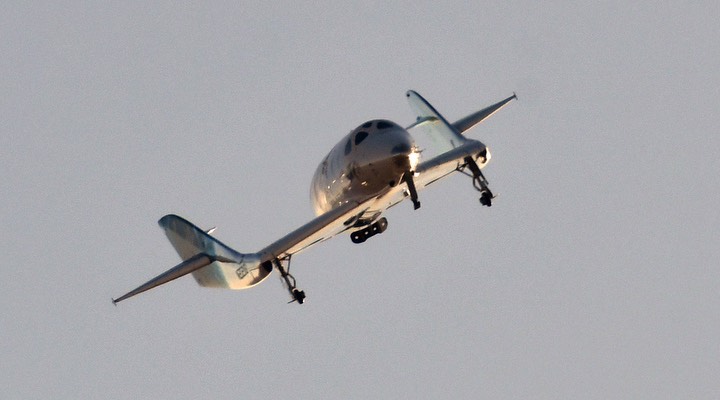
But there has been a recent push to redefine the internationally-recognized boundary of space to the lower 80-kilometer mark, and the Fédération Aéronautique Internationale, the world air sports governing body, announced Nov. 30 that it will reconsider the location of the boundary, which is useful for keeping scorecards and determining who and what vehicles have flown in space.
“In the last few years there have been many scientific and technical discussions around this demarcation line for the ‘edge of space’ and variance around this as a boundary condition for recognition of ‘astronaut’ status,” the FAI said in a statement.
“Recently published analyses present a compelling scientific case for reduction in this altitude from 100 kilometers to 80 kilometers,” the statement continued. “These analyses combine data/modeling from a number of differing perspectives (latitudinal variations during solar cycles, theoretical lift coefficients for different size/configuration satellites ranging from cubesats to the International Space Station, perigee/apogee elliptical analysis of actual satellite orbital lifetimes, etc.) to a level that has never been done before in relation to this issue.”
The Kármán line is named for Theodore von Kármán, a pioneer in theoretical aerodynamics who co-founded the Jet Propulsion Laboratory.
The recent analyses of the boundary of space “also provide an accurate overview of some of the historical arguments and inadvertent misrepresentations of Kármán’s actual analyses and conclusions from over half a century ago,” the FAI statement continued.
The air sports governing body said it would organize a workshop with the International Astronautical Federation in 2019 to “fully explore this issue with input and participation from the astrodynamics and astronautical community.”
Jonathan McDowell, an astronomer at the Harvard-Smithsonian Center for Astropyhsics who tracks rocket launches, is a proponent of changing the internationally-recognized threshold of space to the 80-kilometer altitude. McDowell tweeted after Thursday’s SpaceShipTwo flight that he plans to include the rocket plane’s first mission to space on his widely-referenced list of human spaceflights.
“Stucky is the 568th human to fly above 80 km,” he tweeted, a list that includes professional astronauts and pilots of the X-15 rocket plane, which flew above the 80-kilometer mark in the 1960s. The Federal Aviation Administration is expected to award Stucky and Sturckow commercial astronaut wings after Thursday’s flight, joining SpaceShipOne pilots Mike Melvill and Brian Binnie as the only pilots to achieve that distinction.
Sturckow already flew above the 80-kilometer altitude on his four space shuttle missions.
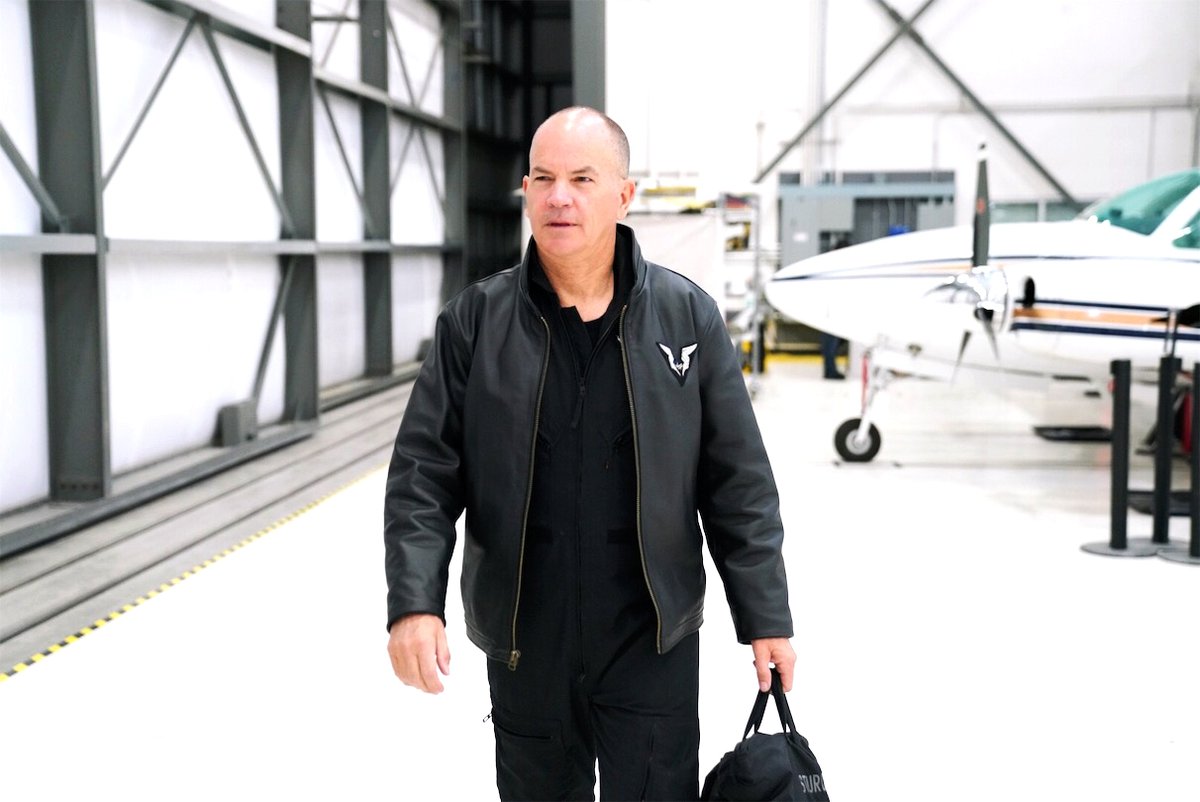
Four NASA-supported science experiments rode aboard SpaceShipTwo on Thursday, making it Virgin Galactic’s first revenue-generating flight.
“The anticipated addition of SpaceShipTwo to a growing list of commercial vehicles supporting suborbital research is exciting,” said Ryan Dibley, Flight Opportunities campaign manager at NASA’s Armstrong Flight Research Center in Edwards, California. “Inexpensive access to suborbital space greatly benefits the technology research and broader spaceflight communities.”
The experiments flown Thursday included investigations studying the behavior of dust particles on low-gravity planetary surfaces and the response of plant tissue to microgravity. NASA also flew a demo payload to test fluid flow control technologies that could be used on thermal control and life support systems on future spacecraft, and a vibration isolation mounting interface designed to reduce disturbances during launch, re-entry and landing.
Virgin Galactic is competing with Blue Origin, founded by Amazon billionaire Jeff Bezos, in the suborbital space tourism and research market. While Virgin Galactic’s SpaceShipTwo vehicle uses an airborne release to fire into space and lands on a runway under manual pilot control, Blue Origin’s fully-automated New Shepard rocket and crew capsule takes off vertically from a launch pad, followed by a propulsive landing of the booster and a parachute-assisted return of the passenger-carrying module.
Blue Origin has accomplished nine New Shepard flights since 2015 — all without passengers — including two in-flight tests of the rocket’s abort system, which could be activated to rapidly push the crew capsule away from a failing booster. The highest altitude achieved by a New Shepard flight to date is nearly 390,000 feet — almost 119 kilometers — thanks to an extra burst of energy provided by the capsule’s abort rocket during an escape test in July.
Following a standard mission profile, the New Shepard has reached a maximum height of around 351,000 feet, or 107 kilometers.
Several hundred would-be space tourists have paid deposits on $250,000 tickets to ride Virgin Galactic’s SpaceShipTwo. Blue Origin has not yet started selling tickets for New Shepard.
While Thursday’s flight was the first time a piloted U.S. vehicle has reached the 80-kilometer mark since the last space shuttle mission in July 2011, work continues in preparation for the first flight of an orbital-class U.S. crewed spacecraft. SpaceX and Boeing, each working under multibillion-dollar contracts with NASA, are developing human-rated capsules that could be ready to carry astronauts to the International Space Station next year.
Email the author.
Follow Stephen Clark on Twitter: @StephenClark1.


